Anastasia Paparrizou
The Inductive Constraint Programming Loop
Oct 12, 2015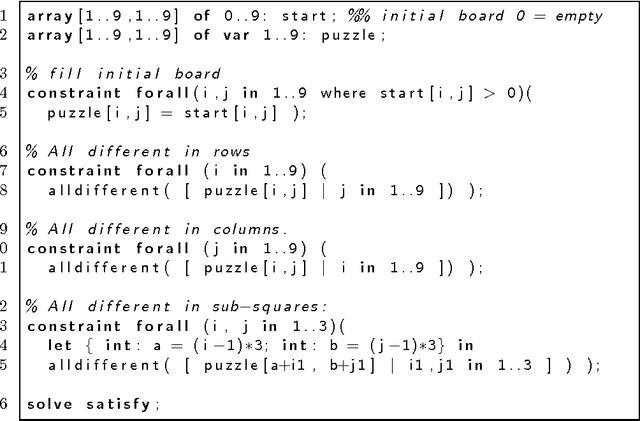
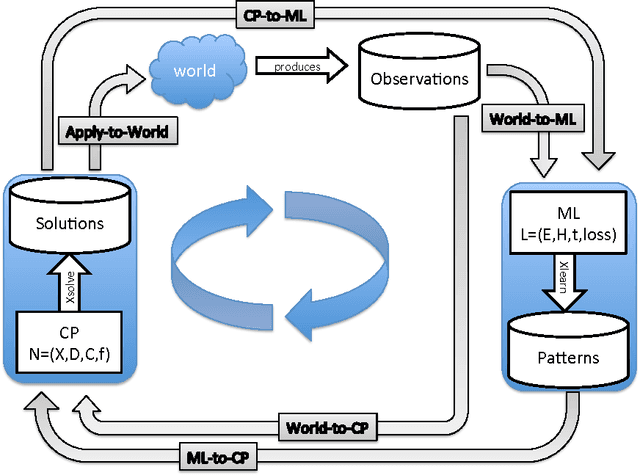
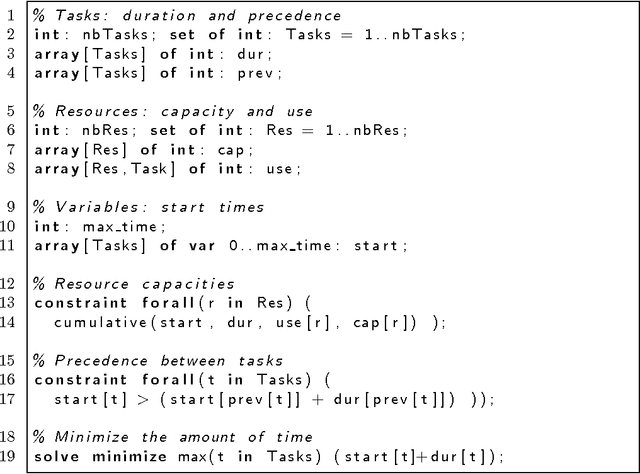
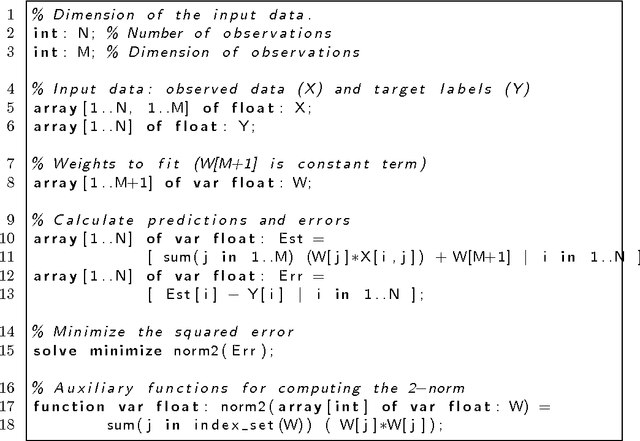
Abstract:Constraint programming is used for a variety of real-world optimisation problems, such as planning, scheduling and resource allocation problems. At the same time, one continuously gathers vast amounts of data about these problems. Current constraint programming software does not exploit such data to update schedules, resources and plans. We propose a new framework, that we call the Inductive Constraint Programming loop. In this approach data is gathered and analyzed systematically, in order to dynamically revise and adapt constraints and optimization criteria. Inductive Constraint Programming aims at bridging the gap between the areas of data mining and machine learning on the one hand, and constraint programming on the other hand.
Experimental Evaluation of Branching Schemes for the CSP
Sep 02, 2010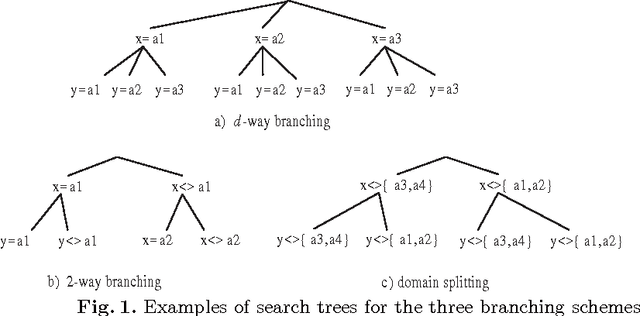
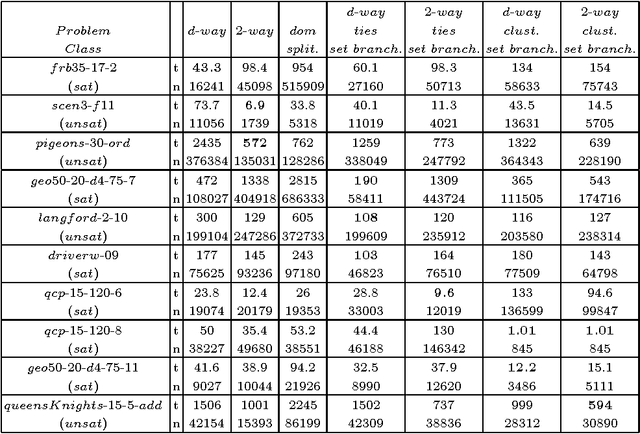
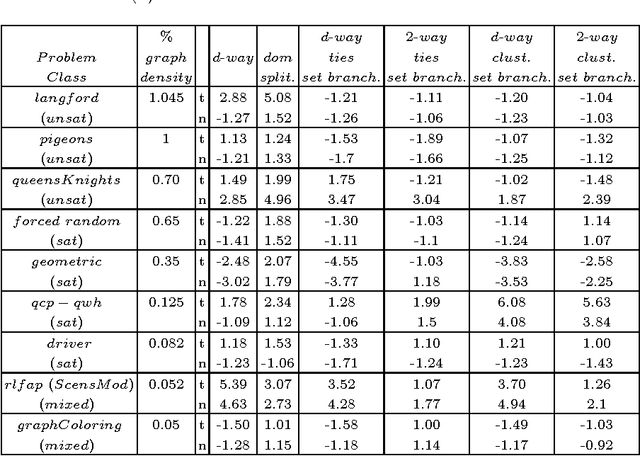

Abstract:The search strategy of a CP solver is determined by the variable and value ordering heuristics it employs and by the branching scheme it follows. Although the effects of variable and value ordering heuristics on search effort have been widely studied, the effects of different branching schemes have received less attention. In this paper we study this effect through an experimental evaluation that includes standard branching schemes such as 2-way, d-way, and dichotomic domain splitting, as well as variations of set branching where branching is performed on sets of values. We also propose and evaluate a generic approach to set branching where the partition of a domain into sets is created using the scores assigned to values by a value ordering heuristic, and a clustering algorithm from machine learning. Experimental results demonstrate that although exponential differences between branching schemes, as predicted in theory between 2-way and d-way branching, are not very common, still the choice of branching scheme can make quite a difference on certain classes of problems. Set branching methods are very competitive with 2-way branching and outperform it on some problem classes. A statistical analysis of the results reveals that our generic clustering-based set branching method is the best among the methods compared.
Improving the Performance of maxRPC
Aug 30, 2010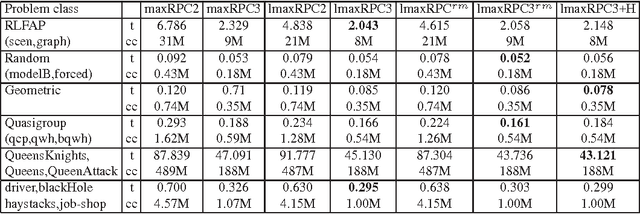
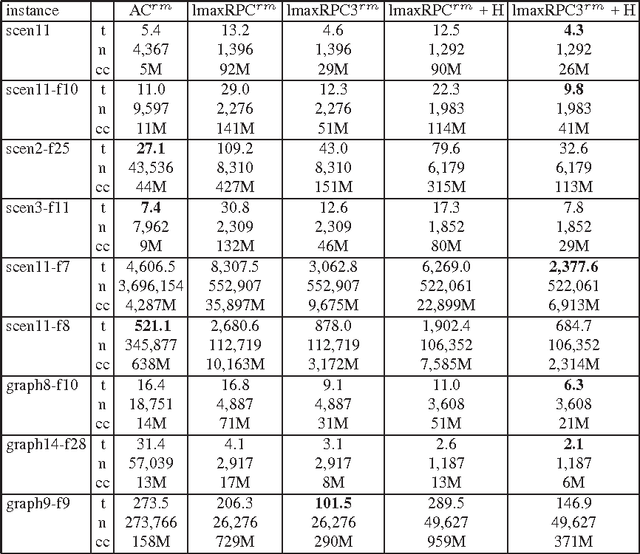
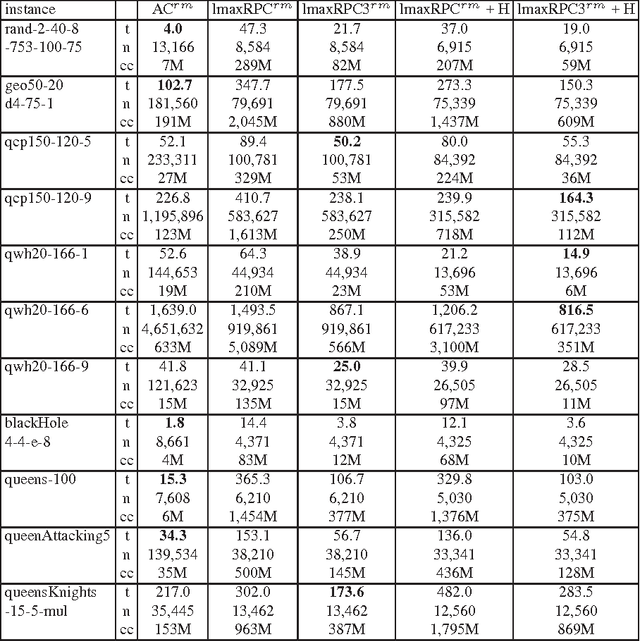
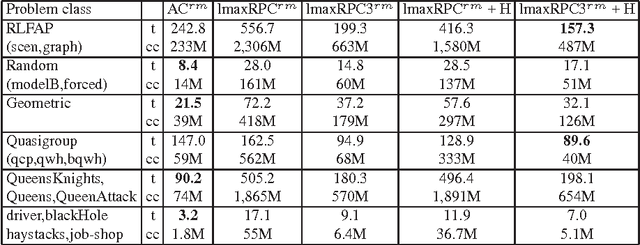
Abstract:Max Restricted Path Consistency (maxRPC) is a local consistency for binary constraints that can achieve considerably stronger pruning than arc consistency. However, existing maxRRC algorithms suffer from overheads and redundancies as they can repeatedly perform many constraint checks without triggering any value deletions. In this paper we propose techniques that can boost the performance of maxRPC algorithms. These include the combined use of two data structures to avoid many redundant constraint checks, and heuristics for the efficient ordering and execution of certain operations. Based on these, we propose two closely related algorithms. The first one which is a maxRPC algorithm with optimal O(end^3) time complexity, displays good performance when used stand-alone, but is expensive to apply during search. The second one approximates maxRPC and has O(en^2d^4) time complexity, but a restricted version with O(end^4) complexity can be very efficient when used during search. Both algorithms have O(ed) space complexity. Experimental results demonstrate that the resulting methods constantly outperform previous algorithms for maxRPC, often by large margins, and constitute a more than viable alternative to arc consistency on many problems.
 Add to Chrome
Add to Chrome Add to Firefox
Add to Firefox Add to Edge
Add to Edge